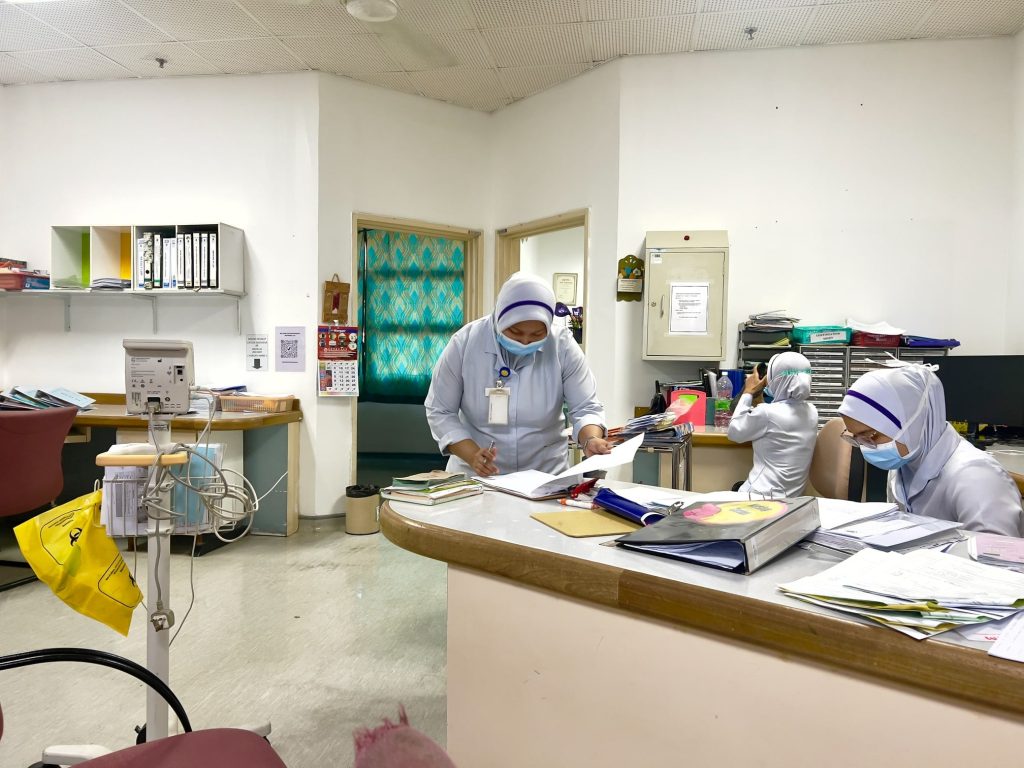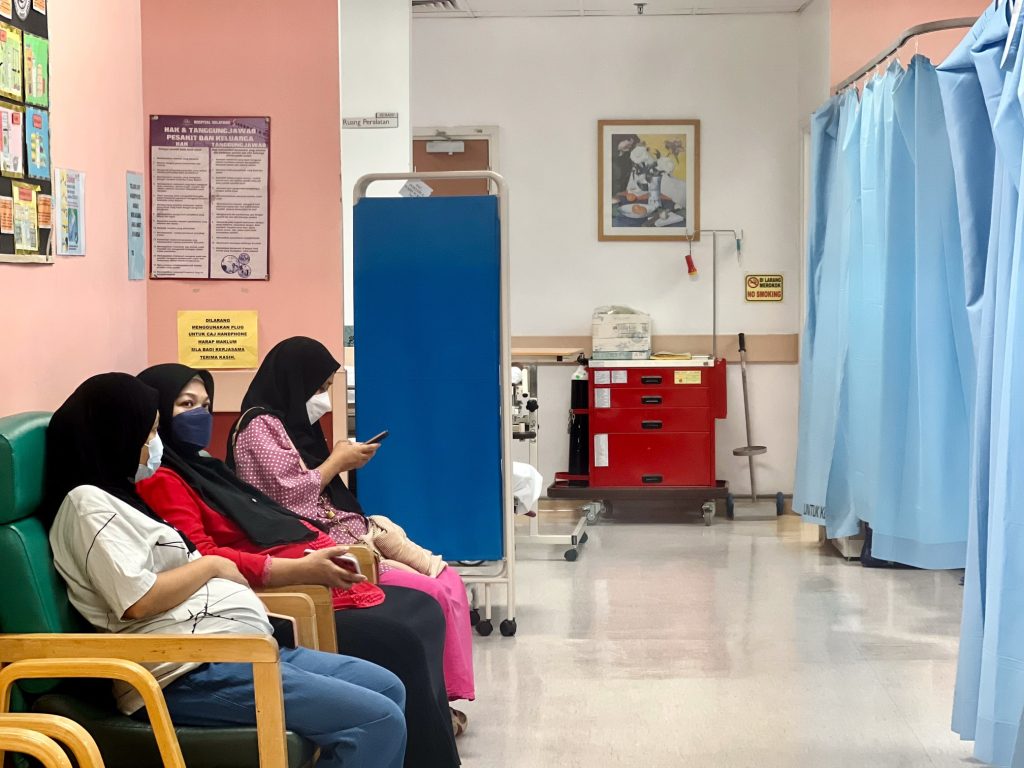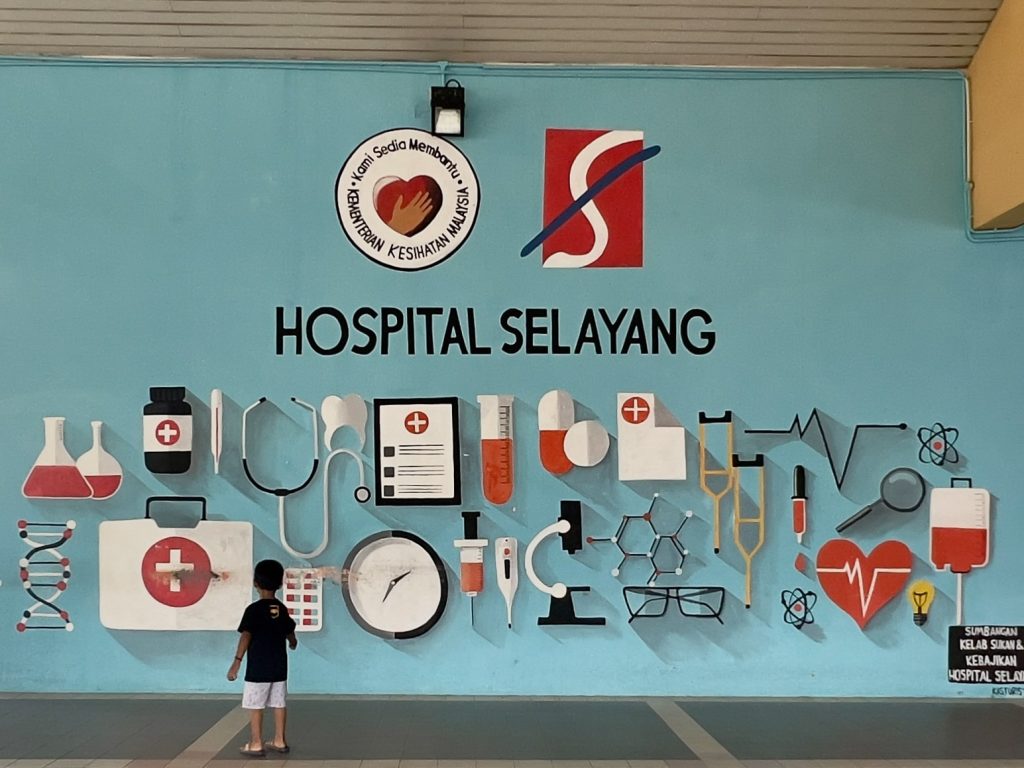SELAYANG, July 28 – Doctors at Selayang Hospital’s obstetrics and gynaecology (O&G) department have sounded the alarm over patient safety and care standards, as staffing levels are expected to fall well below the recommended threshold by month end.
Selayang Hospital is expected to lose around 120 medical officers as part of the Ministry of Health’s (MOH) nationwide relocation exercise on July 31, the highest number among public health care facilities in Selangor, of which seven are from the O&G department.
With the departure of seven trained doctors – a third of its current (already understaffed) workforce of 21 medical officers – Selayang Hospital’s O&G department is set to operate with only 14 medical officers to manage critical services.
These include four 30-bed maternity wards, a labour room complex with 14 suites and operating theatres, a 32-bed gynaecology ward, and a busy clinic.
“By right, the quota for this department (O&G) is 40 medical officers,” said Dr Michael (not his real name), a senior UD52 doctor at Selayang Hospital’s O&G department.
“We have never had 40 MOs from the very beginning. All this while, we’ve had to cope with 20-over officers. The most we had was 30 medical officers.
“But with this relocation, it’s going to be a total disaster. Fourteen medical officers to cover the entire department is illogical,” Dr Michael told CodeBlue when met at Selayang Hospital last July 16.
A workforce of only 14 medical officers for the Selangor tertiary hospital’s O&G department is nearly three times lower than the recommended 40.
Current Work Burden ‘A Lot’: One MO Handling C-Sections, Wards Abandoned To Deal With Simultaneous Emergencies

Selayang Hospital’s O&G department currently operates with 21 medical officers, including four Master’s trainees. There is also one additional tagging medical officer.
The current staffing level allows the department to allocate four medical officers for the labour room complex, four for maternity wards – one medical officer for each ward – four for the gynaecology ward, and 10 to manage the clinic.
“In the ward, the medical officers will have to conduct rounds in the morning and again in the evening. But emergencies can happen at any time. You cannot always expect to finish your rounds and relax afterward. O&G is unpredictable, there is always an emergency,” said Dr Harris (pseudonym), a medical officer at Selayang Hospital’s O&G department.
“At the labour room complex, there will be at least two medical officers to cover the PAC (Patient Admission Centre), where we receive about 30 to 40 patients per day. They are responsible for assessing, examining, and making decisions about where to send these patients – whether to the ward, labour room, or for immediate emergency operations.
“We have one medical officer assigned to cover the operating theatre (OT), who will deal with all caesarian sections from morning until 5pm. Another medical officer is solely responsible for overseeing the entire labour room with its 14 suites. Although there are nurses capable of handling deliveries, there are still difficult cases that medical officers must attend to.
“In the OT, we have only one medical officer stationed to perform the C-sections. However, emergencies don’t always happen one at a time. We often have two to three emergencies simultaneously. When that happens, a second OT has to be opened. If there are not enough personnel, someone from the ward must abandon their duties and assist with the C-section.
“In the gynae department, we have only four medical officers to handle patients in the ward, referrals from the emergency department (ED), and to perform emergency gynae operations.
“The gynae department receives at least 20 to 30 referrals per day from the ED. This means going down to the ED to assess, examine the patients, and deciding the next course of action. If there is an emergency gynae operation, one of them must go to the OT.
“On Tuesdays and Thursdays, which are elective OT days, one or two medical officers will have to be in the OT. This leaves us with only two medical officers to cover the gynae ward, ED referrals, and sometimes, gynae patients in the intensive care unit (ICU).
“The burden is a lot,” Dr Harris said. “And this is what we are dealing with now.”
With Just 14 MOs, Labour Rooms, Wards, And Clinic Will ‘All Be Compromised’

It was also highlighted that the O&G department’s clinic attends to about 150 patients daily on weekdays.
“The worst is the clinic. It’s a disaster. Yes, we have 10 medical officers stationed there, but usually, we’ll only be left with six to seven officers due to sick leave and emergency leave. Everyone is just tired from work and cannot cope anymore.
“The clinic attends to around 150 patients per day. In the last few weeks, we could only end the clinic at about 5pm or 6pm. Before this, when we had 14 medical officers at the clinic, we could finish at around 2pm or 3pm. After the clinic ends, we have to do blood tracing and all the related paperwork in the clinic, and there are no nurses or housemen available to assist.
“To make matters worse, we have issues with our lab IT system. Everything has to be done and traced manually, which takes up even more time,” Dr Harris said.
The relocations on Monday will leave the clinic with only three medical officers to manage patient care. “If there are 150 patients and only three medical officers, that means one medical officer will have to see 50 patients in a day. I don’t know how things will go. Maybe the last patient will be seen at 9pm, if the patient is still willing to wait,” Dr Harris said.
CodeBlue reported on Tuesday that residents in Selayang and Serdang are increasingly seeking medical attention at Kuala Lumpur Hospital’s (HKL) emergency and trauma department, allegedly due to the perception of faster service.
This trend was further encouraged by the accessibility of the HKL MRT station, which began operations in March this year.
Dr Harris said Selayang Hospital receives a lot of patients from border towns like Slim River in Perak and Genting Highlands in Pahang. “Some of these patients are supposed to go to Temerloh, but Selayang is nearer, so they come here.”
“I seriously have no idea how we are going to run our services with just 14 medical officers,” Dr Harris said. “Our labour rooms, our wards, our clinic – all will be compromised.”
Patients At Risk: Longer Waiting Times, Neglect Of Critical Care, Potential Deaths

The acute shortage of medical staff at Selayang Hospital’s O&G department will not only result in longer waiting times for patients, but also neglect of patients needing critical care.
“Let’s say we have only one medical officer attending to patients at the PAC. Suddenly, this medical officer needs to attend to an emergency C-section operation. That means there is no medical officer at the PAC. If there is an emergency at the PAC, there is nobody there to cover,” said Dr Heidi (pseudonym), another medical officer at Selayang Hospital’s O&G department.
The PAC section within the O&G department serves as an “emergency department” specifically for pregnant women. Pregnant women who encounter any problems or contractions will be directed to the PAC instead of the hospital’s emergency department.
“Imagine, the patient comes, and we can only attend to them after two to three hours,” Dr Michael said.
Dr Heidi highlighted that the lack of proper screening in the PAC means that emergency cases might go unnoticed, leading to potential delays in critical care.
“Sometimes we may miss patients who are in an actual emergency because nobody was there to screen them. So, nobody knows,” Dr Heidi added. “When there’s an emergency operation, sometimes with complications, the medical officer will be stranded in OT for two to three hours, sometimes even longer. It will backtrack everything.”
In the worst-case scenario, the lack of immediate attention or intervention could lead to patient mortality. “Deaths can happen. For instance, if the patient has abruptio placentae (placental abruption) or bleeding, and they are not attended to immediately, they may lose their baby, and we can even lose the patient as well,” Dr Michael said.
“O&G is a department where anything can happen at any time. We need someone on standby at all times,” he added.
Selayang Hospital Not Listed As Placement Option Despite 120 Medical Officers Leaving, Highest In Selangor

Despite having the heaviest outflow of manpower in Selangor due to permanent appointments, Selayang Hospital was, shockingly, not included as a placement option in the eHousemen system.
The omission means that none of the over 4,100 medical officers up for permanent placements will be going to Selayang Hospital.
Dr Michael said the reason for Selayang Hospital’s omission from the system is unknown. “We have not received our answer as to why there was no opening at all for Selayang Hospital. By right, when someone leaves, someone else must replace.
“That’s the buffer system that is supposed to be in place. But when we asked (the hospital director) why there is no opening in Selayang Hospital, there was no answer until now.”
CodeBlue reached out to Selayang Hospital director Dr Afidah Ali for clarification on the hospital’s exclusion from the eHousemen system and its plan to address the critical staff shortage. Additionally, CodeBlue sought comments from Health Minister Dr Zaliha Mustafa’s office, but received no response from either party.
CodeBlue previously reported that the entire state of Melaka was completely omitted from the eHousemen system, allegedly due to a miscommunication “blunder”.
Hospital Management Refuses To Cut Services Or Turn Away Patients

Dr James (pseudonym), a specialist at Selayang Hospital’s O&G department, proposed reducing clinic and surgical services.
“With only 14 medical officers remaining, many of them are likely to experience fatigue – they are going to fall sick often, and take medical leave. So, we may have just 10 medical officers per day. How are you going to function with 10 officers? Not possible.
“I don’t see any other option but to reduce services, possibly cutting down on clinics or surgeries. That’s my take on it,” Dr James said.
However, Dr Michael said Selayang Hospital’s top management has not given staff approval to turn patients away or to reduce any service to reflect the staffing situation.
According to the senior doctor, Selayang Hospital has so far maintained its full range of services, even during the Covid-19 pandemic.
“We served as a full Covid hospital for only a month. During that time, we received complaints from other hospitals that they were unable to accommodate our patients. As a result, we had to take back our patients and manage both our regular services and the care of Covid patients,” Dr Michael said.
“We have been compromising for the past two, three years, but now, the shortage is severe. I don’t think we can cope this time.”
Dr Michael shared figures indicating that among O&G departments in Klang Valley public hospitals, Selayang Hospital has the highest proportion of medical officers relocating for permanent placements.
Out of the current 21 O&G doctors at Selayang Hospital, seven will be leaving, resulting in a staff count reduction of 33 per cent. Shah Alam Hospital will see six O&G doctors leaving from the current team of 33, which is an 18 per cent reduction in staff count.
Meanwhile, Sungai Buloh Hospital’s O&G department will see eight doctors departing from the current team of 52, a 15 per cent reduction in staff count.
Other O&G departments across MOH hospitals in Selangor and Kuala Lumpur are also facing staff departures, with approximately two to four doctors leaving for permanent positions.
These include Tengku Ampuan Rahimah Hospital in Klang (four leaving out of the current team of 51), Kajang Hospital (three leaving out of 24), Serdang Hospital (three leaving out of 40), Ampang Hospital (two leaving out of 37), and Tunku Azizah Hospital in Kuala Lumpur (two leaving out of 50).
Four To Five O&G Doctors Plan To Quit If Nothing Changes

Regarding Selayang Hospital’s ability to address the situation, Dr James said the hospital’s top management lacks the authority to handle the matter. He said that decisions concerning placements and staffing come from higher authorities outside the hospital’s control.
“I don’t think this is the fault at the hospital level. We don’t have any power at the hospital level to control this. It’s coming from higher up, whoever is managing their placements. There is nothing much at the hospital level. What else can we do but just to voice out our grouses?” the specialist told CodeBlue.
When asked about their reactions if there were no changes, Dr Michael promptly stated his intention to leave. “I will leave. I’m the most senior medical officer in this department. I have been here 12 years and all this while, we have been compromising. But I’m getting old as well. If nothing happens, I will definitely leave.”
Dr Harris said he may also be pushed to leave by the overbearing workload. “There are four or five of us planning to leave if nothing changes,” Dr Michael said.
CodeBlue spoke to three medical officers and a specialist, besides visiting Selayang Hospital’s O&G department for this story.








